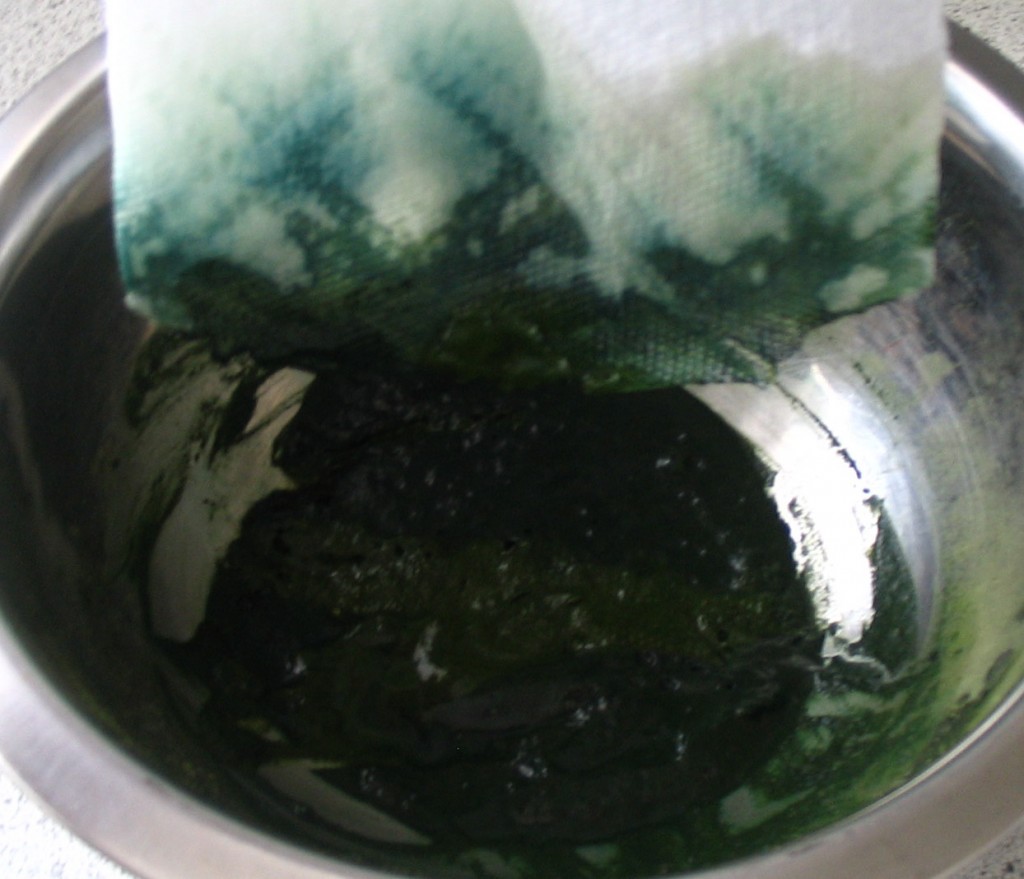Grey hairs can be so stubborn. When dealing with edges and a higher percentage of grey it can be double the pain in the butt.
How do we deal with this while maintaining a natural hair regimen? This one’s for you Donna Maria 🙂

Well it’s possible but yes it might take a little bit of patience and extra elbow grease on your part.
First you need to decide on your recipe and let’s focus on a recipe for the above woman and her grey hair. Let’s call her Deidre. I would recommend she maintain her natural hair color of dark brown to black.
We decide on a dark brown recipe.
We’ll then need henna and indigo. The best choices would be our Moroccan Henna and Indigo for hair. The proportions for dark brown would be 60% indigo to 40% henna.
Deidre has very short hair so she won’t need much. She’ll use 3 tbsp of indigo to 2 tbsp (maybe even 1.5 tbsp) henna. Following the directions provided by Henna Sooq, she’ll mix, use and apply her henna coloring treatment.
After Deidre washes out her henna coloring treatment she either has amazing coverage or pretty good but not good enough or edges are still grey or orangey-toned or worse it washes out in a few days.
Now what do we do?
- Amazing coverage. Yes! Thumbs up. This will last 4-6 weeks unless your hair grows really fast. In the case of short hair the greys tend to show up a bit quicker. So repeat as needed.
- The color isn’t exactly there yet. Should the color not have taken all over as well as you’d like, it’s okay to do another henna hair coloring treatment within that same week. Just always make sure you balance with moisture with our hair oils.
- The edges are killing me! Now edges are tough. They don’t always enjoy being colored. We recommend you repeat the exact same recipe but with a smaller quantity that is enough to do a root touch up. For root touch ups this may mean reducing the recipe by 50-75%. Follow all the steps as usual to color your hair as before.
- The color washed out. Now this is not good at all. Let’s figure out what might have happened. Did you make sure to mix everything accordingly to our directions step by step? Did both henna and indigo in their bowls achieve full dye release before you combined them together? Make sure to wash out with a gentle shampoo and maybe even conditioner only (co-wash). Try to clarify beforehand with our Soapnut shampoo bar.
- Call or email Khadija. I’m more then happy to talk one on one with you about your henna coloring treatments and experience. We’re also on Periscope (@hennasooq) with Q&A sessions, and classes every week. Email: Khadija@HennaSooq.com or 410-579-4543
Deidre changes her mind and wants to color her hair black.
Sometimes when trying to achieve black tones what we hear the most is that the indigo didn’t take. This is more common then you may realize. We don’t tell our clients false tales that it can work every time nor for everyone. This is part of the process of discovering your hair, and finding out what works and what doesn’t. Trying a natural product once also doesn’t give that product a true chance to succeed. We all deserve a second chance 🙂
Should the indigo not take, then please repeat. Go over every step and detail of your mix. Make sure both henna and indigo had fully developed. Make sure you aren’t using clarifiers after your henna coloring treatments. Honey can strip the color out, being that it’s a natural hydrogen peroxide. Add salt to your indigo to help it cling better.
What usually works most of the time, is during your first step with henna, add at least 50-60% indigo to the henna to initially darken the color. When you have that as your base, then use indigo alone as your second step to achieve black tones. This works really well for salt and pepper hair.
Again, whenever you need assistance don’t hesitate to send Khadija an email or call Henna Sooq at 410-579-4543. We are more then happy to help you on your henna coloring journey.
We really hope this helps. Do you have any tips you can share with our readers?







recieved my henna order in the mail today and this is the reason I always purchase my products from henna sooq quick response and delivery and the extra goodies included along with the personalized thank you is reason for me to continue my orders thank you for your products and attention to the small things that make the difference
Thanks for the information! My grey hairs are taking over!! I really need to do something about them. I plan to use what I have on hand (Jamila & Amla). That’s what I used the last time which was over 6 months ago. I plan to sit under the steamer for one hour (whew!) and then for another one hour cover my hair with a plastic grocery bag (they’re bigger than shower caps) and a scarf. Hopefully, I’ll have time to do it this weekend.
Yolanda that’s great! Which recipe will you be trying?
Hi Kea. Great to hear from you. Are you going for a black tone? If you’re doing a one step with henna and indigo you have mix them each separately first and then combine them when they are both ready. On our YouTube channel (https://www.youtube.com/user/HennaSooq) we have new videos being released on this method. Then you can follow up with indigo alone as the second step. This would give much better coverage for creating black tones.